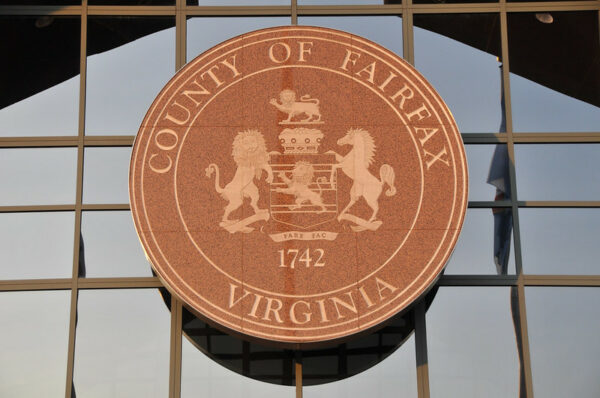
Fairfax County could send over $24.4 million in federal money to small businesses recovering from the COVID-19 pandemic through its PIVOT grant program.
The money, which doesn’t have to be repaid, is intended to help economic recovery efforts. After an application period ran from June 23 to July 9, county officials gave updates on the program to the Fairfax County Board of Supervisors during an economic initiatives committee meeting this morning (Tuesday), stressing the timing and scope of the support.
“Our retail services and amusements businesses really did need this funding,” said Theresa Benincasa, economic mobility manager with the county’s Department of Economic Initiatives. “They stepped up and requested it in large numbers.”
Nearly 1,600 applicants for Fairfax County’s small business PIVOT grant program are eligible to get the money based on an initial eligibility check, while 921 applicants are ineligible, county staff reported.
During the meeting, Board of Supervisors Chairman Jeff McKay asked if the county had flexibility on an eligibility requirement that a business have a commercial storefront. He said two businesses approached him about the issue, one of which was a catering business tied to a closed office building.
Benincasa said officials could work with him on that issue.
Most of the applicants that were ineligible didn’t meet the threshold for economic injury. Over 300 didn’t have a commercial storefront, and nearly 200 secured a Small Business Administration Restaurant Revitalization Fund grant, which provided $283,000 on average, according to the county.
Recipients had to have at least a 15% loss in annual revenue. Eligible applicants averaged a 46% reduction in revenue and 25% reduction in employees, according to county data.
Benincasa noted that applications are still moving through a three-step process to obtain the money. The first step involved using a web portal to determine initial eligibility, and the remaining steps could last from August to November.
The grants are being funded with $25 million that the county received from the American Rescue Plan Act. If demand surpassed that threshold, the county had prepared to prioritize funding to hotels and then create a lottery system for other applicants, but because it didn’t, that randomization element will be scrapped, the county said Tuesday.
The breakdown of awards is projected to be the following:
- $14.1 million to 1,178 applicants with an average of four employees in the areas of retail, services, and amusements
- $5.4 million to 309 applicants with an average of eight employees in the food service sector
- Nearly $4.5 million to 61 applicants with an average of 25 employees in the lodging sector
- $415,000 to 49 applicants with an average of four employees in the areas of arts organizations, museums, and historical sites.
The awards range from $1,500 to $18,000 per business, which all had to have 500 employees or fewer.
Hotels could receive $400 per room if they had 10 rooms or more. In January, the American Hotel and Lodging Association released a report on the “sharp and sustained” drop in travel due to COVID-19 in 2020 and projected that the travel industry won’t fully recover until 2024.
Benincasa said that most of the hotels in the county are getting PIVOT money, but that didn’t include all of them, possibly because of the 500-employee cap.
“The need is immediate,” said Dranesville District Supervisor John Foust, who chairs the economic initiatives committee, noting the county’s work isn’t finished in helping small businesses.
Photo via Machvee/Flickr
Hospitality workers looking to return to their jobs and hotels trying to recover from the pandemic are seeing signs of progress in an industry wrecked by shutdown orders and an upheaval in business trips.
Fairfax County’s new PIVOT grant program is prioritizing grant money for hotels, while also assisting other hard-hit businesses with $25 million in federal COVID-19 relief money. The program received 581 fully completed applications — including 15 in the lodging category — on Wednesday (June 23), its first day accepting applications.
Applications will be accepted through July 9, and the order they are received has no bearing on priority. But if funds are limited, lodging businesses with at least 10 rooms will be addressed first before a lottery then determines which companies in need will get money.
Managers in the Reston-Herndon area say they’re around half capacity. One said many furloughed staff are inquiring about when they can return, and three wedding parties stayed there recently.
Michael Riddlemoser, manager of the Inns of Virginia’s Falls Church location, said his 32-room hotel is also around 50% full, down from 75 or 80% full before March 2020.
“We just need more people coming into town,” he said. “DC [needs] to get full for us to start getting the DC business.”
A “Fairfax County Economic Recovery Framework” report presented to the county board of supervisors in January found that the accommodation and food services industries shed more jobs than any other sector, projecting a loss of 12,420 jobs or 26% of its workforce through December 2020.
“The pandemic has had disproportionate impacts across industries, with hospitality, food service, and small retailers most heavily impacted and facing the longest trajectory for recovery,” the study said.
The leisure and hospitality sector has lost 3.1 million jobs during the pandemic, representing over a third of all unemployment in the U.S., according to an American Hotel & Lodging Association report from February.
The report said the industry lost over 17,000 jobs in Virginia last year and was projected to lose over 13,000 jobs this year.
UNITE HERE Local 25, which represents about 7,200 hospitality workers across the DC region, had only 2% of members working last July, but the employment rate has bounced back to 25% in Northern Virginia, according to Benjy Cannon, the union’s director of communications.
Cannon attributes recent gains over the last eight weeks to vaccinations and domestic travel.
But the union believes pre-pandemic occupancy levels won’t return until international travel and long-term business travel returns, Cannon said. With unemployment benefits set to expire in September, that could lead the group to press legislators for changes.
“By late 2023, 2024, the industry is slated to recover stronger than it was in 2019,” Cannon said. “So, while this is an unfortunate bump in the road and our members are certainly mourning over it, we do still think that this region, this market, can recover in a really robust fashion and expect it to, even if it’s still a few years away.”
Photo via Febrian Zakaria on Unsplash


